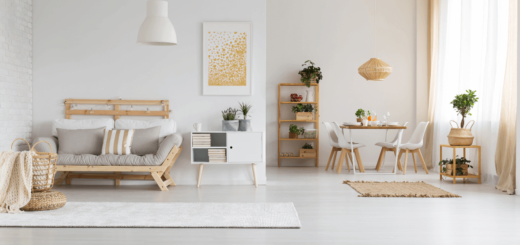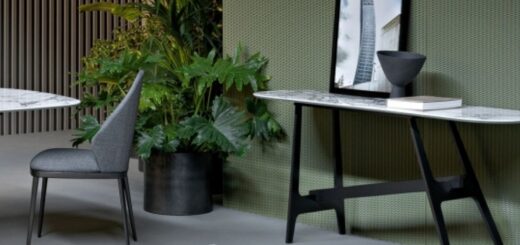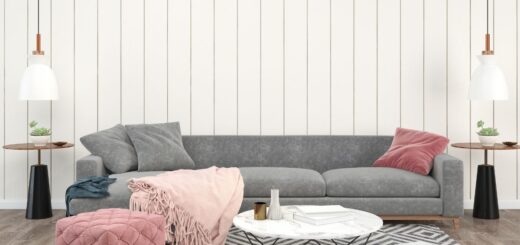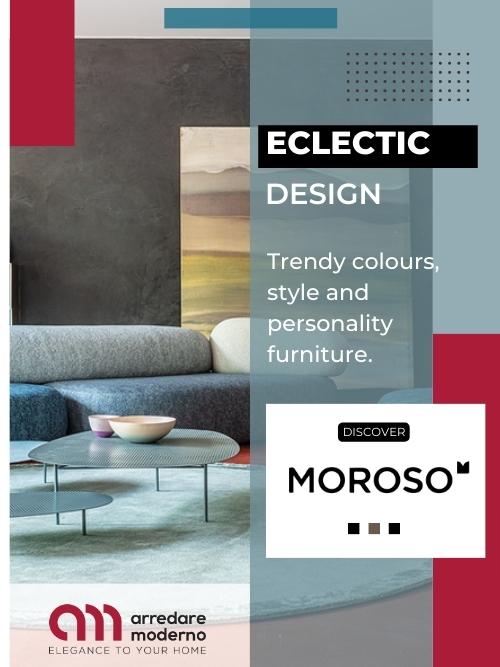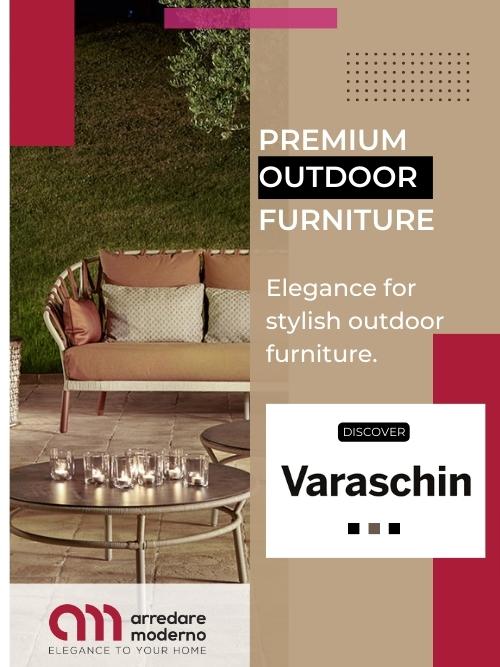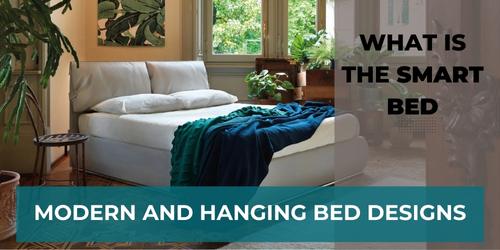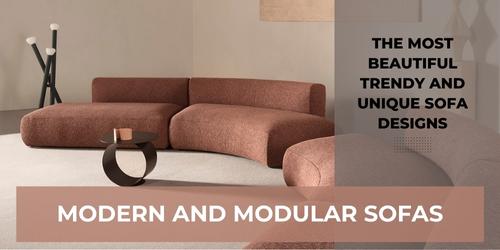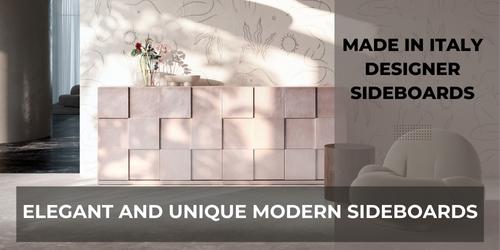What is the difference between veneered and laminated wood furniture?
Veneered wood and laminated wood are the most commonly used for home furniture. Thanks to their characteristics, these types of wood are very high-performance and versatile.
But what are the main differences between wood veneer and laminate? First of all, it is the coating that changes: laminate is covered with synthetic material, while veneer is covered with real wood. Then, the appearance: unlike veneered wood, which preserves the authentic characteristics of wood, i.e. tone and grain, laminated wood merely reproduces the effect. Furthermore, laminated wood panels can imitate particular material effects such as marble, stone and concrete, whereas veneer offers a natural and a lacquered version.
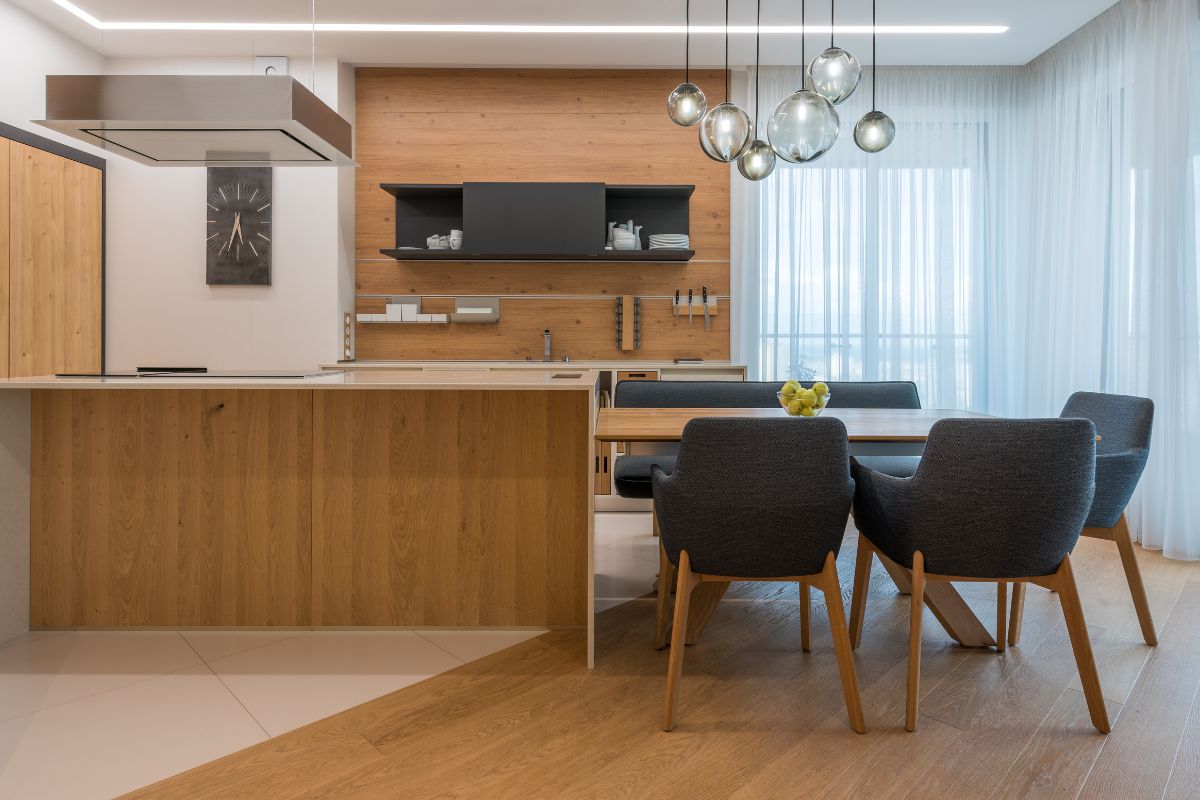
Veneered and laminated wood furniture: the difference
But what exactly is laminated wood?
Laminate is used in complements or modular furniture for the living area, in bedroom wardrobes, in dining and living room tables such as the Tonin Casa Sigma Coffee Table and in kitchen furniture.
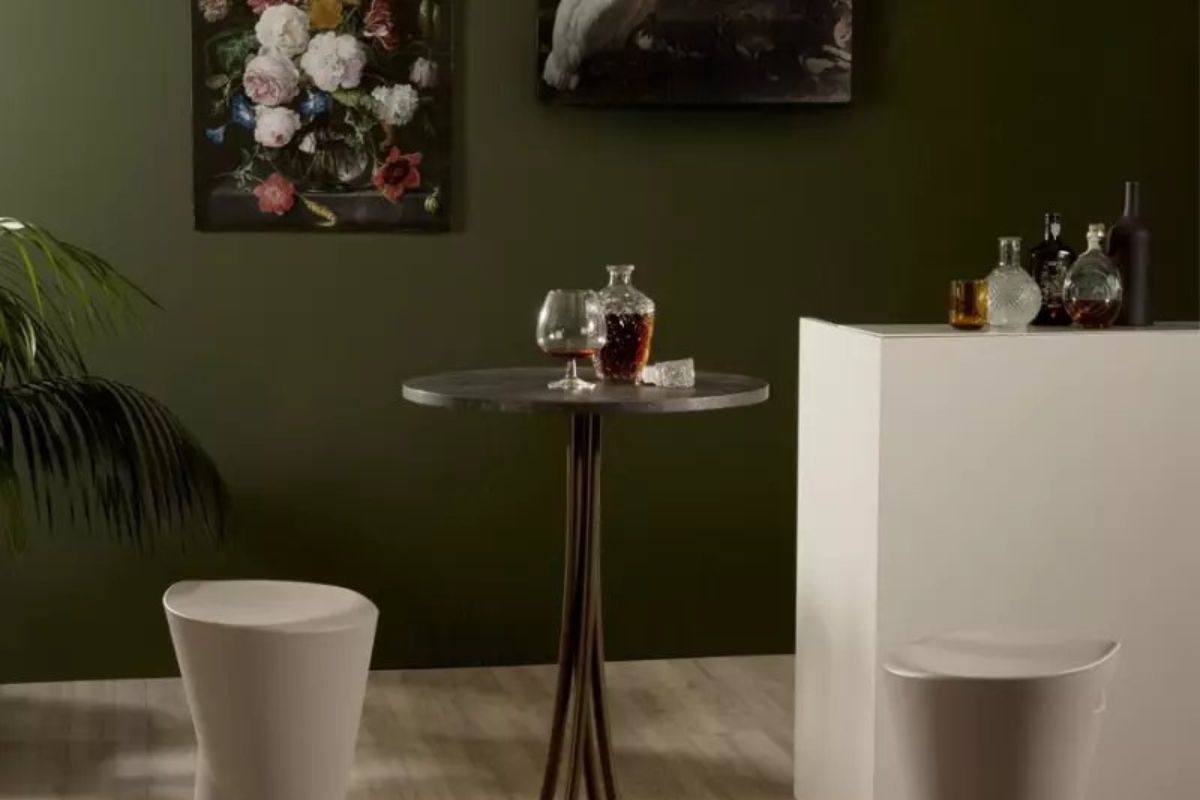
Veneered and laminated wood furniture: the difference
What is the difference between wood veneer and laminate furniture? – Canva
Laminate is a type of covering made by overlapping layers of paper impregnated in thermosetting resins and pressed onto an MDF, chipboard or honeycomb panel. Generally, laminate sheets are about 0.6 millimetres thick, but there are also laminates as thick as 1.2 millimetres up to 2 centimetres, referred to as compacts. The layering, regardless of thickness, remains the same. Laminates, in fact, consist of 3 layers:
- the overlay, the outermost layer, a cellulose film impregnated with melamine resin with a protective function.
- The decorative foil on which the patterns and colours of the panel are reproduced.
- The kraft, the innermost layer composed of strong and resistant paper sheets impregnated with phenolic resins.
How many types of laminate exist?
Depending on the processing procedure or the decorative foils applied, there are different types of laminate:
- HPL, High Pressure Laminate: this is a very strong panel obtained by pressing the sheets with flat presses at high temperatures. HPL laminate is the most widely used in furniture for its qualities of hardness, compactness and homogeneity, good resistance to impact, mechanical stress, scratches and wear, impermeability and resistance to humidity, infiltration, steam and heat, resistance to stains and limescale, excellent hygiene and practicality of use, rich colour and aesthetically pleasing, resistance to light and quick maintenance.
- CPL, Continuous Pressure Laminate: this is a panel produced by means of a lower but constant pressure obtained through roller presses.
- CHPL, Continuous High Pressure Laminate: is a new generation laminate similar to high pressure laminate.
Depending on the decorative foil material used, however, laminate is differentiated into:
- melamine laminate, whose foils are impregnated in melamine resin.
- Polymer laminate, whose plastic foil is heated, stretched, adhered to the surface and folded along the edges so that the coating covers the entire panel.
- PET, a new-generation laminate, an advanced plastic material that is resistant and soft to the touch, recyclable, hygienic and free of toxic emissions.
- Fenix NTM, a laminate composed of acrylic resins fixed to the panel by cold polymerisation, which is the result of nanotechnological processing. Fenix NTM has an anti-fingerprint surface and has the property of regenerating itself, which allows small scratches to be repaired through the simple use of heat. Because of these characteristics, Fenix is used for kitchen worktops in a range of neutral and trendy colours. Because of its aesthetic qualities and resistance, it is one of the most widely used materials for kitchen tops, backs and tables such as the Badù Midj extending table.
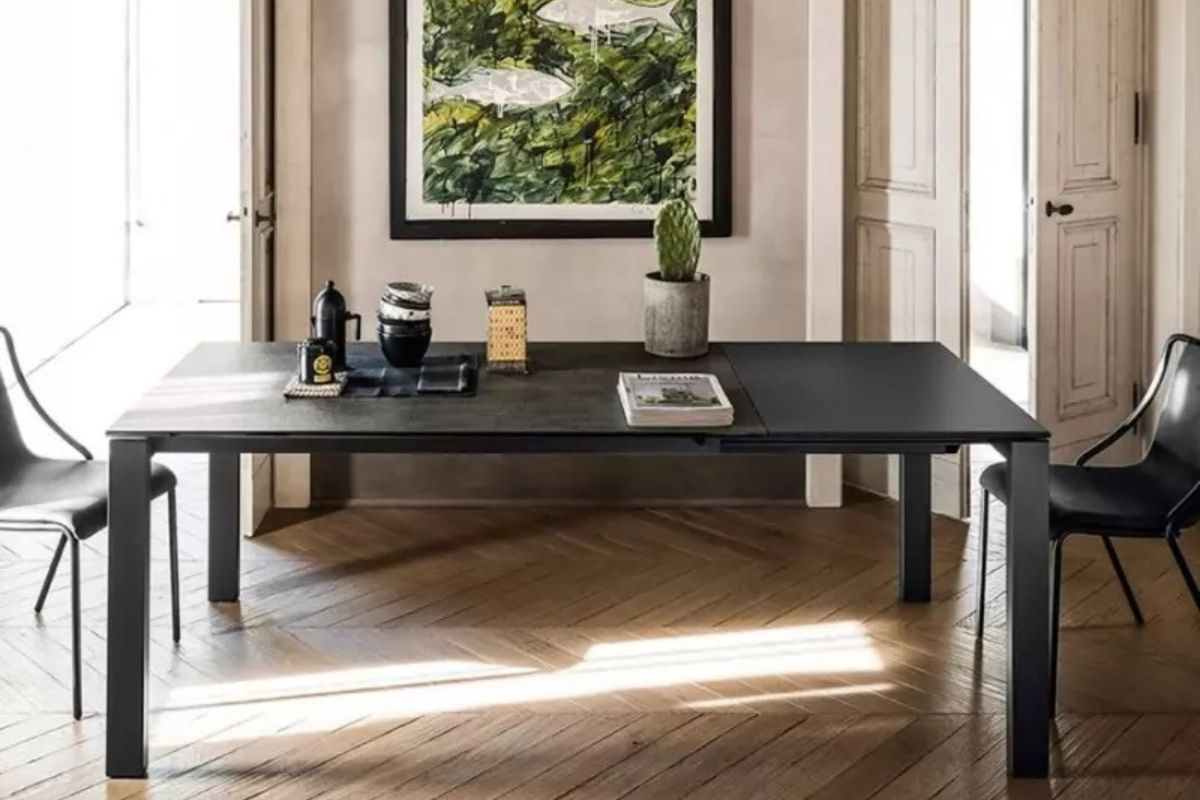
Veneered and laminated wood furniture: the difference
In relation to the aesthetic effect, there are laminates:
- white glossy or matt
- coloured;
- wood effect;
- decorative materials;
- marble, stone or concrete effect.
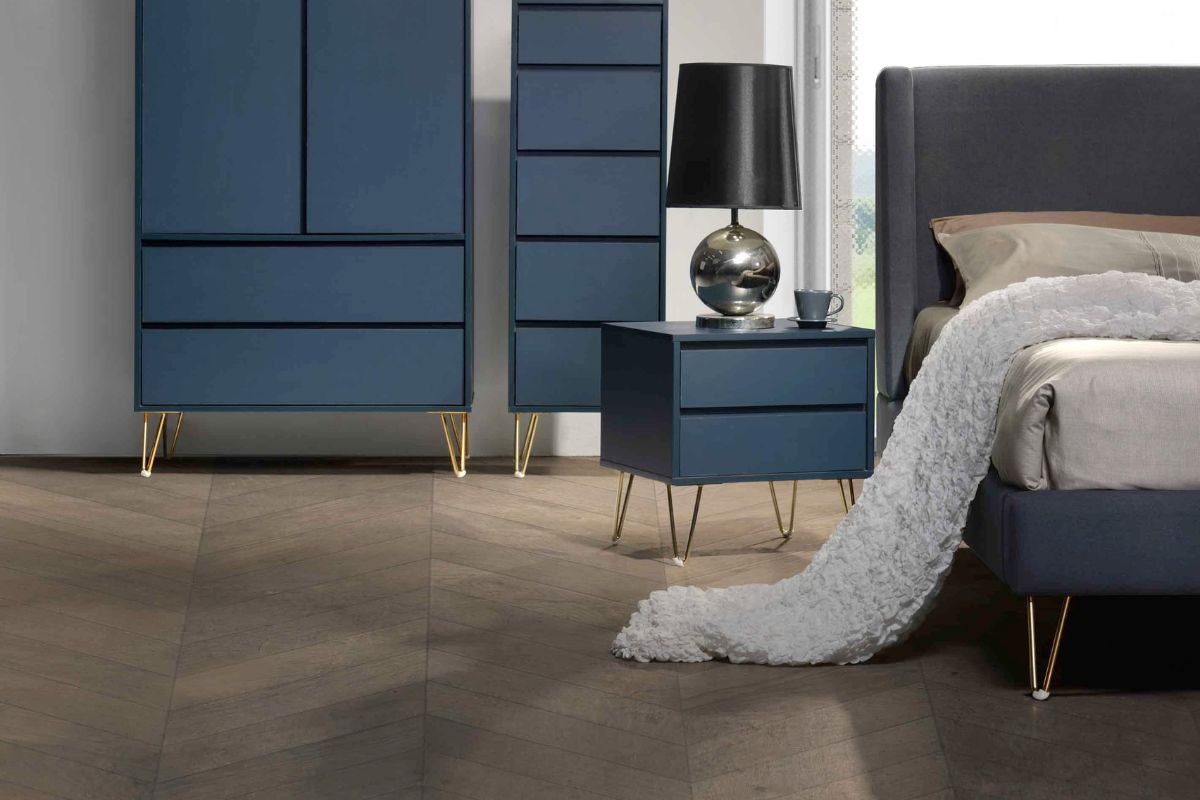
Veneered and laminated wood furniture: the difference
Veneer: characteristics and quality
The name ‘veneer’ comes from the characteristic of coating a wooden surface with very thin sheets of real wood.
Veneer can be applied to panels of various kinds such as chipboard, MDF, plywood, honeycomb.
Veneer woods differ in relation to:
- arrangement of the veneers, which create parallel or asymmetrical patterns and grains depending on the combination;
- orientation of the wood fibres;
- lacquering and dyeing;
- type of wood: among the best-known veneer woods are walnut, canaletto, olive, mahogany, ash, oak, eucalyptus, cherry, birch and ebony;
shades of wood, light or dark.
Wood veneer enjoys good water resistance and stability, resistance to scratches, heat and light. It is easy to clean, offers a rich range of woods, colours and patterns and is quite affordable.



